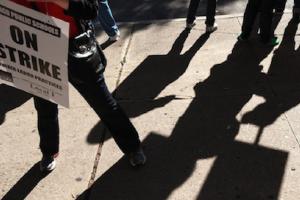Museum Workers, Jolted by Pandemic Job Losses, Turn to Unions
Bloomberg
 The policy shortens the timespan from when the board approves a union's request for a workplace organizing election to when that election is held to as little as 11 days. Previously, the process often took one to two months. The board formally announced the rule in December and it went into effect April 14.
The policy shortens the timespan from when the board approves a union's request for a workplace organizing election to when that election is held to as little as 11 days. Previously, the process often took one to two months. The board formally announced the rule in December and it went into effect April 14.
 As more states feel they’ve been put at a competitive disadvantage by their right-to-work neighbors, the pressure only increases to follow suit and enact their own right-to-work laws. And after a while, a national right-to-work law might not be far behind.
“I suspect that will happen within the next decade,” says Marquita Walker, an associate professor of labor studies at Indiana University.
As more states feel they’ve been put at a competitive disadvantage by their right-to-work neighbors, the pressure only increases to follow suit and enact their own right-to-work laws. And after a while, a national right-to-work law might not be far behind.
“I suspect that will happen within the next decade,” says Marquita Walker, an associate professor of labor studies at Indiana University.
Spread the word